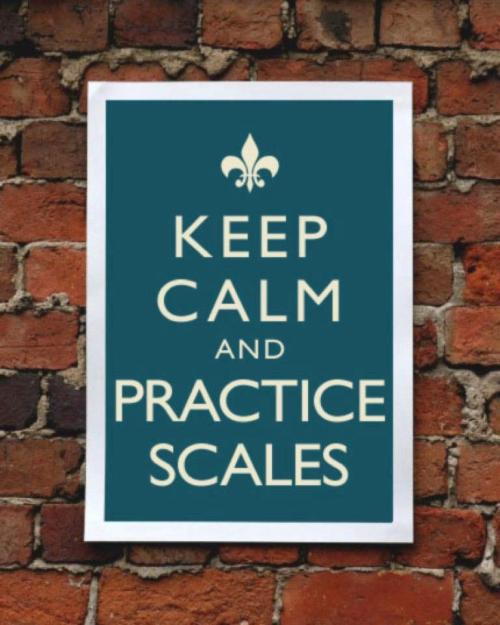Thursday, June 28, 2012
Episode 10: Scale Theory
Hello and welcome back!
Sorry I haven't posted in the actual episodes in a while, but college seems to keep me busy no matter which way I turn. But today, our lesson is to explain what a scale is and give you some to practice!
First off, we need to figure out how to define a scale. A scale is a series of notes in an ascending or descending pattern. For example, let's start with the note C. There are many different scale involving the letter C but they have to follow some kind of pattern. As I said before there are many different types of scales, but the over all feel is there are two basic scales: a major and a minor. Just like they sound, the major scale sounds brighter than the minor. The whole understanding of scales goes back to understanding intervals, which was the topic of the last two episodes (episode 8 episode 9).
The basic progression of a Major scale is W W H W W W H, where W is a whole step and H is a half step. Now let's apply this to a scale, and since the basis of all music is C let's develop a C major scale. It starts on C, then a whole step up would lead to a D (C#- D), followed by a whole step to an E (D#- E) but then we hit the half step in which we get an F. A whole step to G (F#- G), then an A (G#- A), followed by another whole step to B (A#- B) and then we have our last half step back to C. So a C major scale is C D E F G A B C. Now, let's do another example with F. Start with the note given, and follow the intervals above. So a whole step above would be G, another whole step to A but then we get to the half step which we use Bb. Now we need another whole step to C, another whole step to D a final whole step to E and then the half step back to F. So the scale is F G A Bb C D E F. Ok, let do one last example with G. Follow the guide and you should get G A B C D E F# G. The F# in this example and the Bb in the previous one are ways to indicate a key. F# is the only sharp and the rule of key signatures is take the last sharp and raise it a half step. The trick to flat key signatures is take the second to last flat and that is your key, however the key of F is the only key that doesn't follow this rule. So if we went up to the next flat in the order of sharps and flats, it would be Eb but the key would be Bb.
Now the trick to minor scales is moving the pattern above back two spots. For example, the natural minor of C is A minor, and is played like C but starting on A. The same is true for the other scale above; the natural minor of F is D minor and the natural minor of G is E minor. The pattern is W H W W H W W. A minor would be A B C D E F G A, D minor would be D E F G A Bb C D, and finally E minor would be E F# G A B C D E.
If you liked this episode or want to add more to it, then join the Facebook Fan Page or follow me on Twitter. And don't forget to subscribe if you liked this and share!
Subscribe to:
Post Comments (Atom)

No comments:
Post a Comment